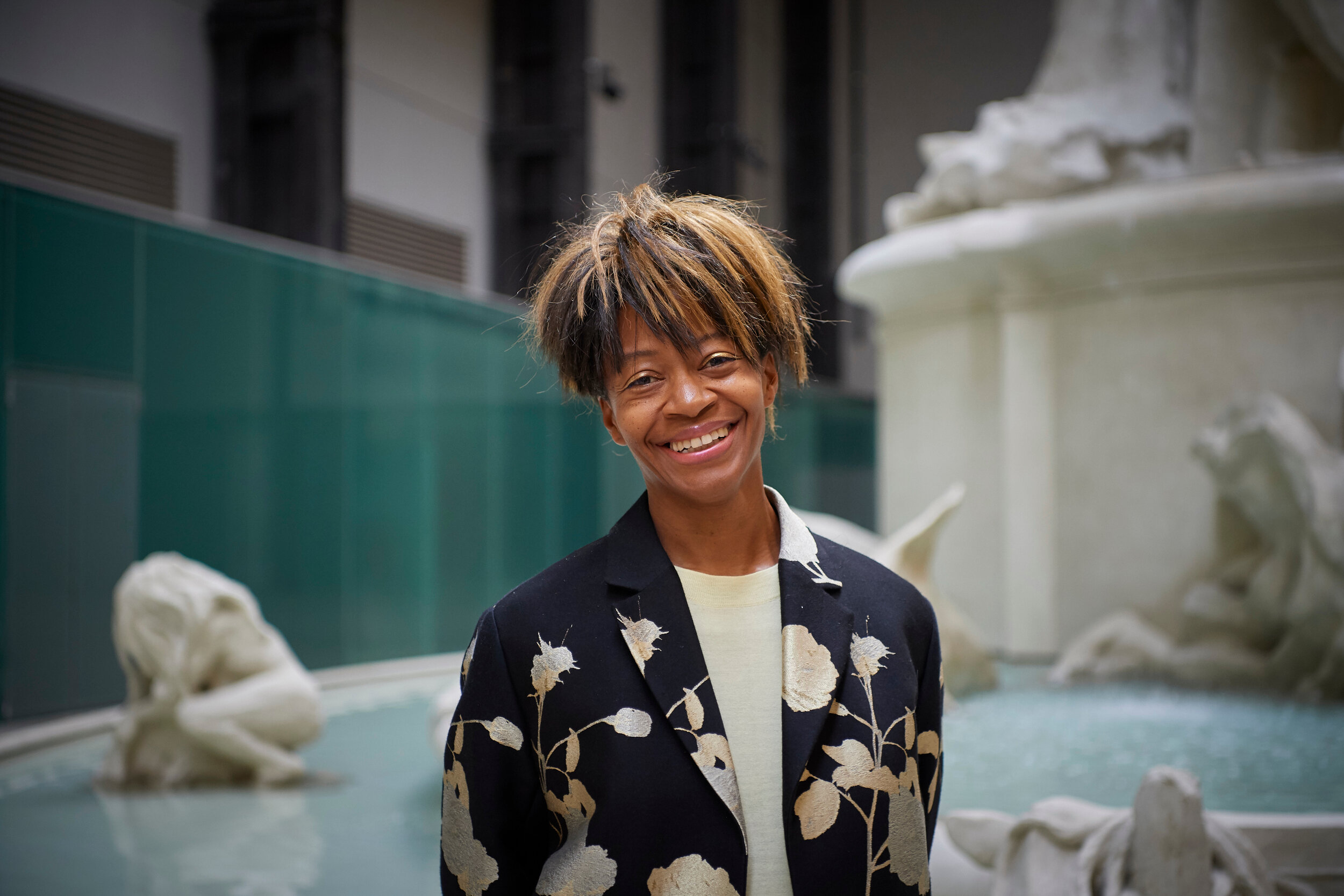Kara Walker: histories of art, race, and 'feeling monstrous'
“I do what I am feeling and what I’m feeling is monstrous. And I do it in the nicest possible way.”
Elly Chaw profiles the sculpture currently on display in the Tate Modern Turbine Hall: Kara Walker’s Fons Americanus.
Born on the 26th November 1969, California native Kara Elizabeth Walker is an African-American contemporary painter, silhouette and print-maker, installation artist, and film producer. She grew up in an artistic household as her father, Larry Walker, worked as a painter – one of her earliest memories involves sitting on his lap in his studio and watching him draw. However, at 13, Walker recalls a pivotal move from multicultural California to Georgia, where she was thrown into a colour-conscious environment. During an interview with The Guardian, she described this abrupt shift as “going from subject to object, the seminal moment in the lives of African Americans where one becomes black.” Despite this, she continued her artistic pursuits and, in 1991, attained a Bachelor of Fine Arts from the Atlanta College of Art; and three years later, a Master of Fine Arts from Rhode Island School of Design.
Throughout her college years, Walker found herself uncomfortable and unable to address the American issue of race in her art, because she did not want to be typified or make her artwork too ‘racially obvious’. Upon graduation, Walker started experimenting with silhouette art — a kind of art associated with gentility, as it was typically used in Victorian and eighteenth century American profile portraits. Walker undermines this convention with an unsettling twist by surfacing the shared histories of African-American slavery during the Antebellum. Through intricate wall-sized black-and-white paper silhouettes, the stark colour contrast allows Walker to tell stories depicting the history of slavery. From this moment onward, Western forms of art became her playground, a space for racial contention and aggression, where she continues to direct and dextrously express her feelings – however monstrous – of both historical and contemporary racial injustice.
Almost 30 years into her artistic career, her work today continues to explore identity, race, sexuality, and violence. Her ongoing exhibition at the Tate Modern in partnership with Hyundai is one of the most ambitious commissions to date, featuring a large-scale public sculpture in the form of a four-tiered fountain. This sculpture is titled Fons Americanus and features a 13-metre tall working fountain inspired by the Victoria Memorial that stands majestically in front of Buckingham Palace. While the Memorial is erected to honour the imperialist achievements of Queen Victoria following her death in 1901, Fons Americanus is in marked contrast a visual collection of black history, honouring and dignifying the lives of enslaved individuals.
It is an agonising spectacle: men drowning amongst a sea of sharks, a fallen image of Victoria (the goddess of victory) with a cut throat, and almost-comical projections of colonial figures in power. In this, Walker explores the interconnected histories of Africa, America, and Europe by interrelating these three continents together with the key motif of water. It is a symbol of the Atlantic Ocean (or the Middle Passage) that connects Europe and America with Africa. It is the site of the transatlantic slave trade and colonialism, as its water is the body that has facilitated these historical events. Walker encircles the continents by collectively representing them in this fountain that dominates Turbine Hall. Upon entry into the main building, the fountain demands one’s attention with its sheer size, as if deliberately asserting its presence. Thus, Walker’s Fon Americanus raises questions about the narratives of power, and paints the historical tragedy of slavery.
Right across from Fons Americanus, in the centre of Turbine Hall stands Walker’s smaller monument: Shell Grotto. As one walks towards the monument from the fountain, we first encounter the image of a perfectly-formed outer shell from artistic historical depictions of the Roman goddess Venus. However, what the shell encases on the other side is the head of a young boy who is almost fully submerged in water.
Water continuously flows from the trapped boy’s eyes as the monument alludes to the ruins of a colonial fortress on Bunce Island in Sierra Leone. Due to its strategic location, the island was an ideal base for European slave traders in the 1600s. More than tens of thousands of men, women, and children were forcefully captured here and shipped from the island to North American colonies (including Georgia). Hence, Shell Grotto is a jarring depiction of the traumatic past behind the slave trade, forcing us to interrogate what we choose to remember and what we forget.
Interestingly, both exhibits have been made through an environmentally-conscious production process. The monuments are built from recyclable or reusable cork, wood, and metal, and the surface coverings are made from non-toxic acrylics and cement composites. This production method is conceived by Brighton-based manufacturer millimetre, deliberately avoiding the use of non-recyclable materials commonly found in the production of large-scale art. Thus, Walker’s monuments not only re-surfaces black history, but also highlights the possibilities of more environmentally-friendly exhibits and installations in the face of climate change.
During an interview with Tate Modern on her exhibition, Kara Walker explains: “my work has always been a time machine looking backwards across decades and centuries to arrive at some understanding of my ‘place’ in the contemporary moment.” Fons Americanus and Shell Grotto, through their visual impacts, indeed transport us back in time, forcing us to learn about and face the tragic history of black communities. As Black History Month draws to a close, it does not mean we stop this pursuit either. It has to be a continuous and conscious effort from all, before society can progress towards greater understanding and equality.
Hyundai Commission: Kara Walker runs until 5th April 2020 at Tate Modern. Entry is free for all.






